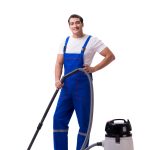Having a great lawn is a goal of many homeowners throughout the state of NY; however to achieve this goal, it is important to know that there are many types of grass and the best care practices may vary significantly from one type of grass to another.
Not knowing the type of grass you have and the best lawn care practices specific to that type can cause some major problems that will prevent the grass from flourishing. For those who lack the time or lawn care knowledge of maintaining their lawn, it is recommended you hire a lawn care service to help you keep your lawn healthy and looking amazing all year round.
The most common types of grass in NY depend on where you are located. For example, in the St. Augustine area, the most common grass type is centipede, Bermuda and Bahai grass.
Cutting the Grass Too Short
A common mistake with do-it-yourself lawn care is cutting the grass too short because of wanting to avoid mowing it as frequently. Cutting the grass shorter than three inches and cutting it before it grows back to 4+ inches can damage the grass and inhibit new growth.
Bagging Grass Clippings
With regular mowing, the grass will never be too long when it is cut. This will allow the clippings to be used naturally as an organic material for building up the soil. This also provides a natural barrier to any weed growth and will help provide shade and cool moist conditions for the grass roots.
Fertilizing at the Wrong Time
Fertilizer should only be used in the active growing seasons, which is spring and summer. For most grass varieties, avoid fertilizing in the mid to late fall or winter, but check with your lawn care service first for those specifics of your lawn.
Overusing Weed Killers
Finally, avoid overusing weed killers. Not only is this an unnecessary expense but it can also create problems for the environment. Chemicals used (including all varieties of herbicides) to eliminate weeds should only be used when required and strictly to the levels recommended by the manufacturer. Click here for more information.







